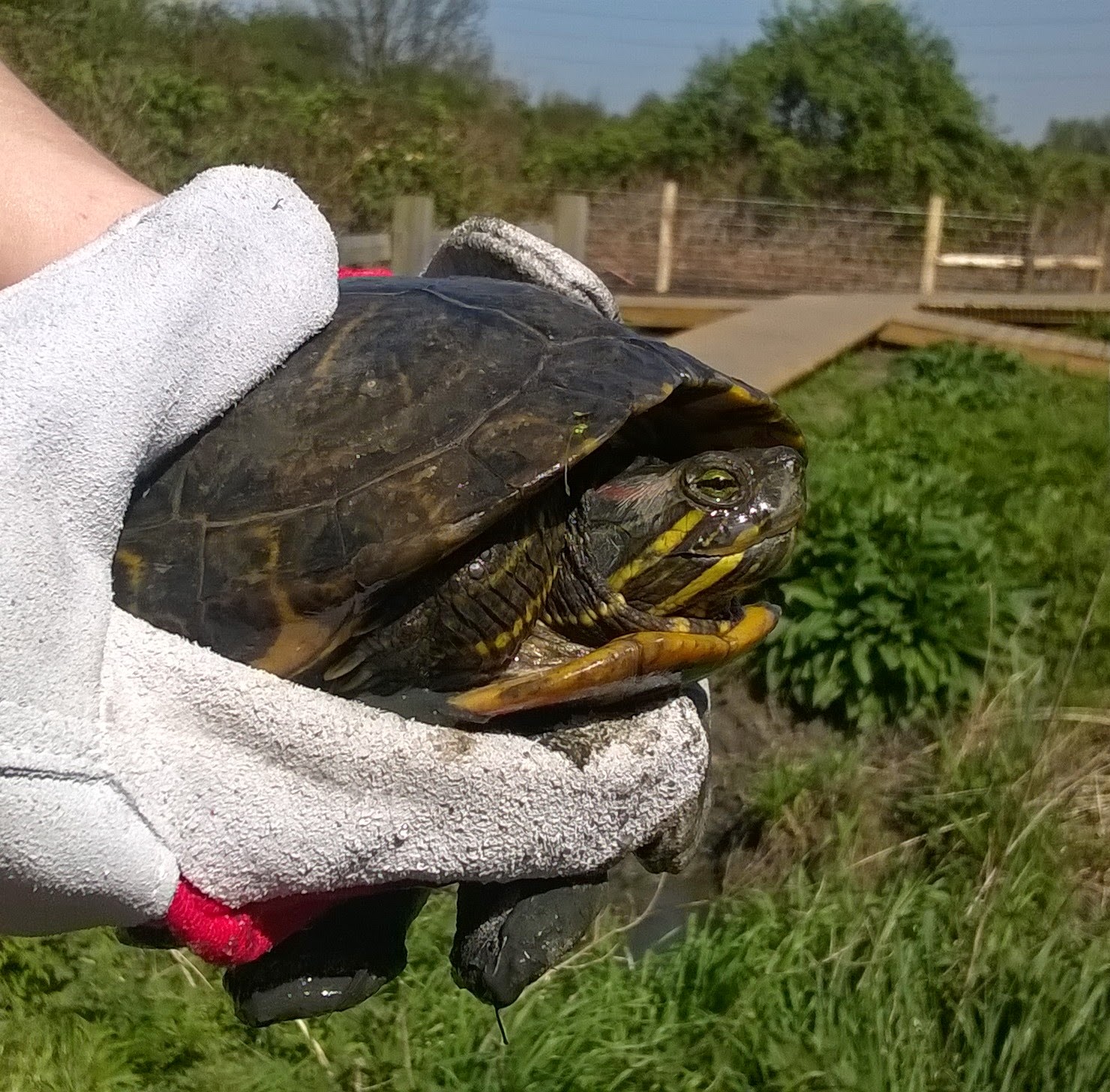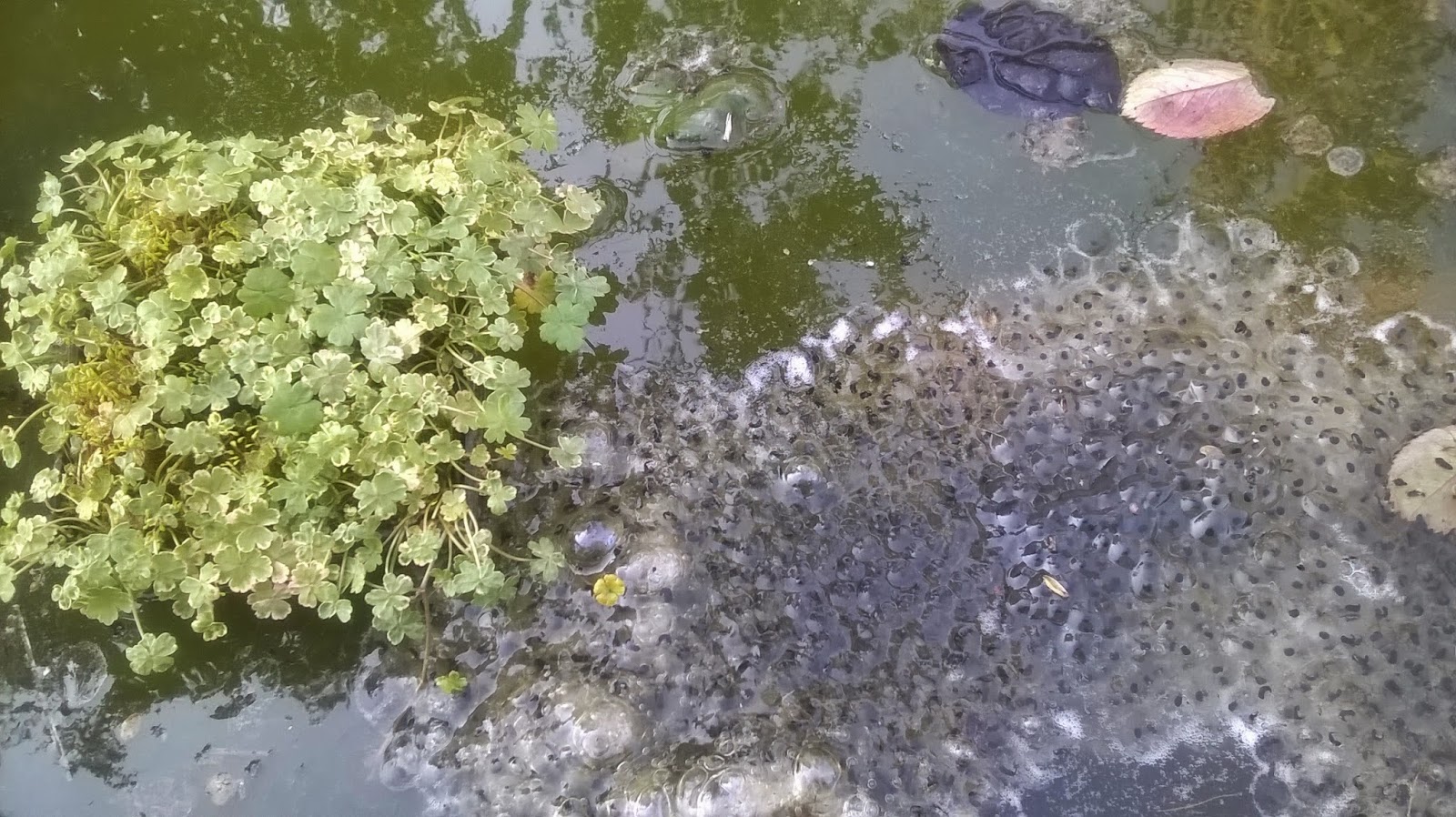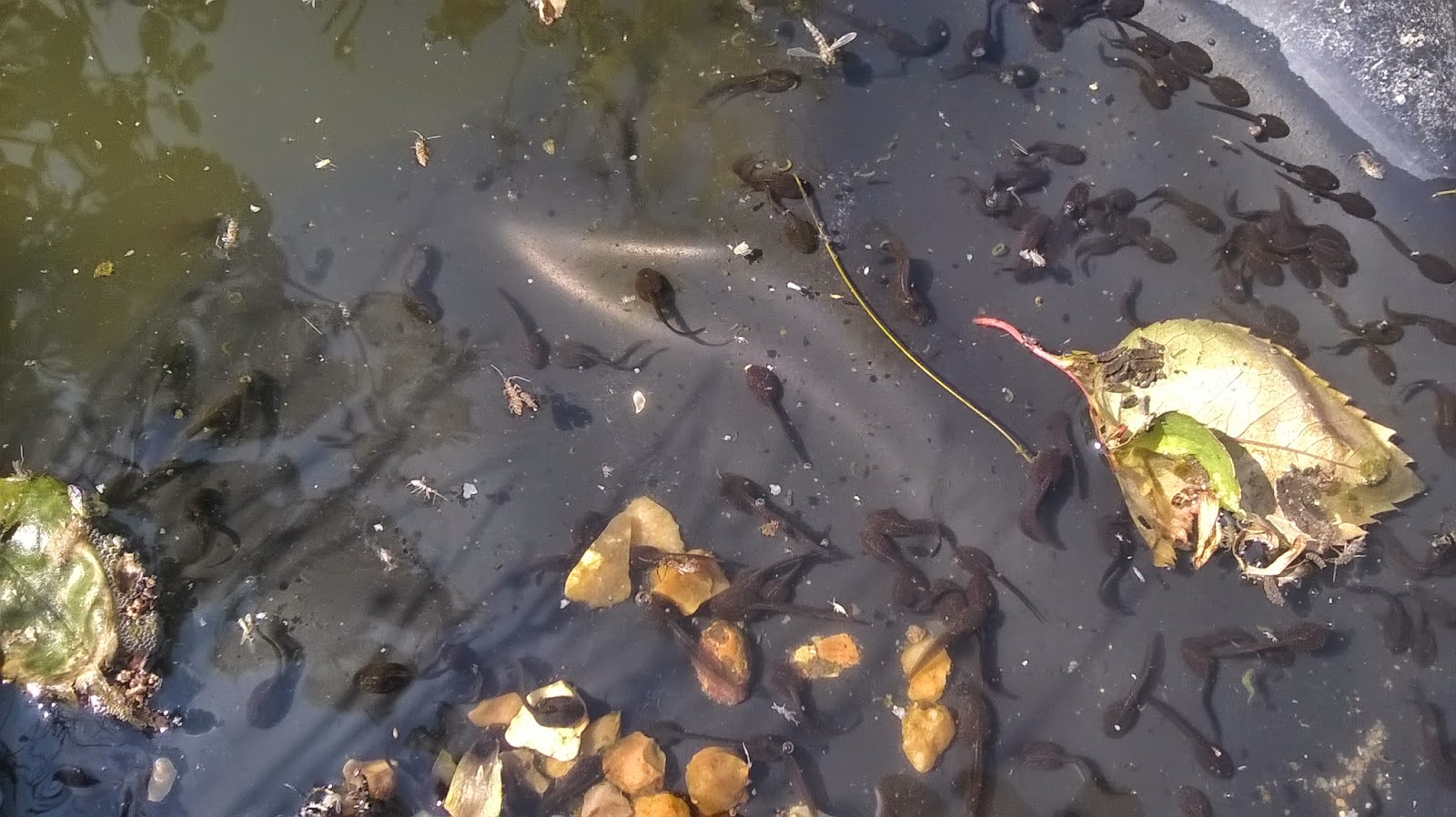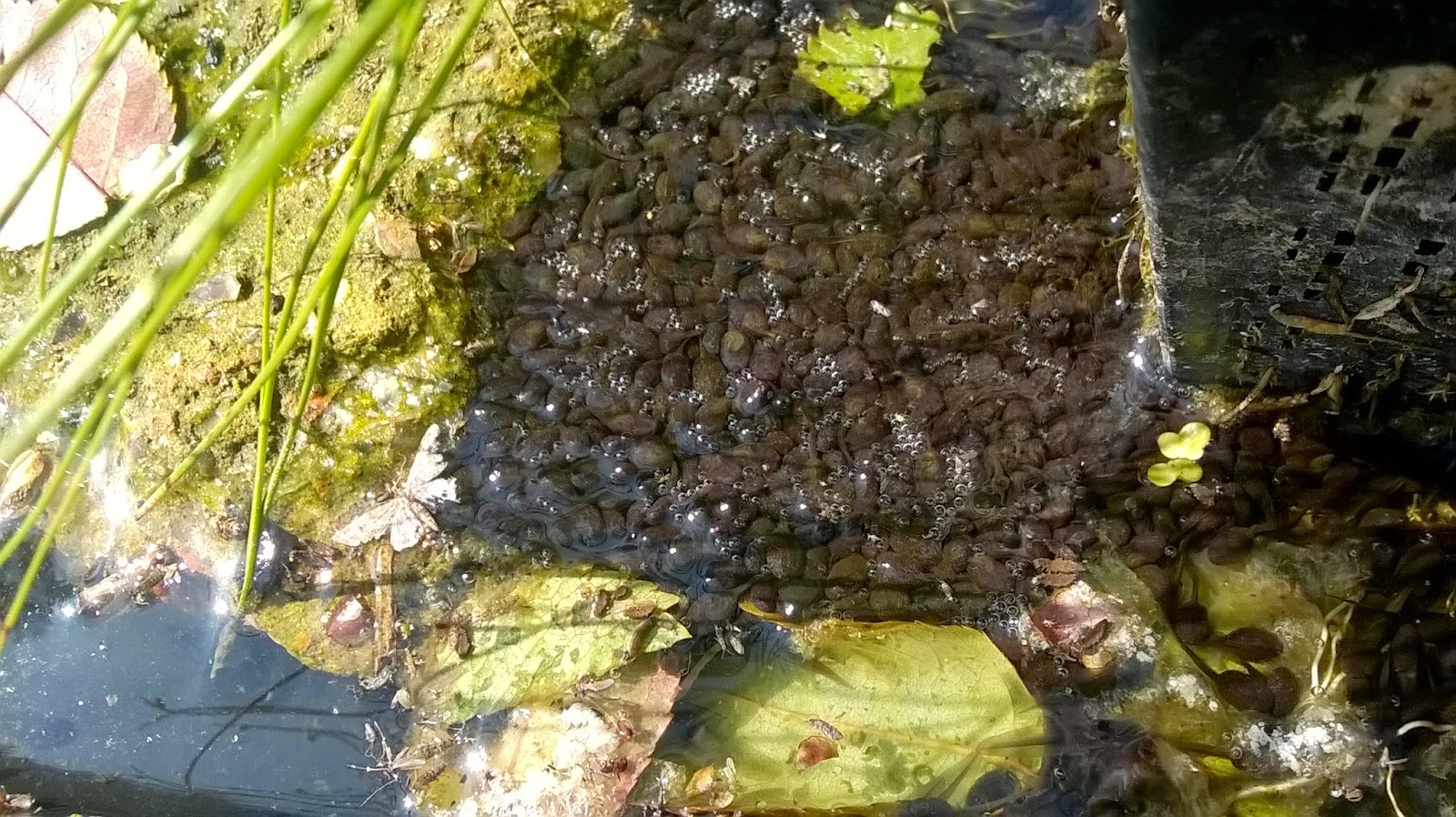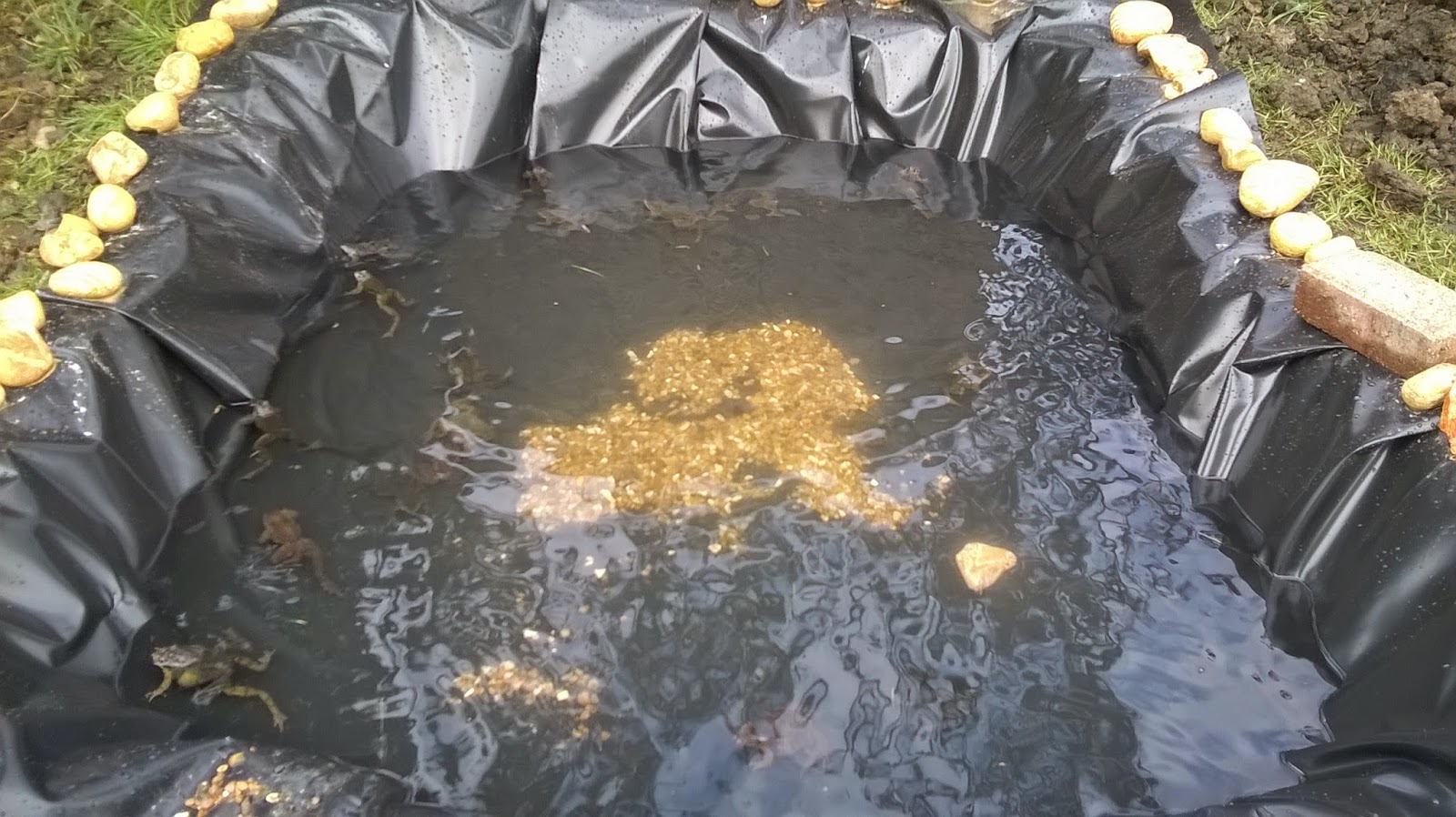Being the beginning of spring, it was time to start planting some seeds in the garden. The garden hadn't seen much activity over the winter so it was great to get out there again. Disturbingly, a dead frog lay on the lawn. Upon further inspection, it would appear the frog may have been attracted to a small collection of filthy water that had gathered at the back of the garden, reserved as the re-wilded nature area. I poked around in the water to see if anything was in there, and was confronted by another dead frog floating in the water. Concerned that perhaps this was attracting unsuspecting frogs to their doom, I decided to empty it out and fill in the hole. Whilst netting out the dead frog, it became apparent that this was home to live frogs as well! A total of eight individuals were found living in this tiny bit of water, including two currently breeding pairs.
 |
| Competition for the female. |
The frogs were briefly transferred to a box filled with cleaner rain water whilst I scooped them out of the sludge in order to make a count. Contemplating this predicament, the logical next step seemed clear ..... Make a proper pond! And so started a new garden project. Aware that there was potential that the two breeding pairs were ready to lay their spawn any time soon, time was of the essence. I researched pond creation online and created a plan of action.
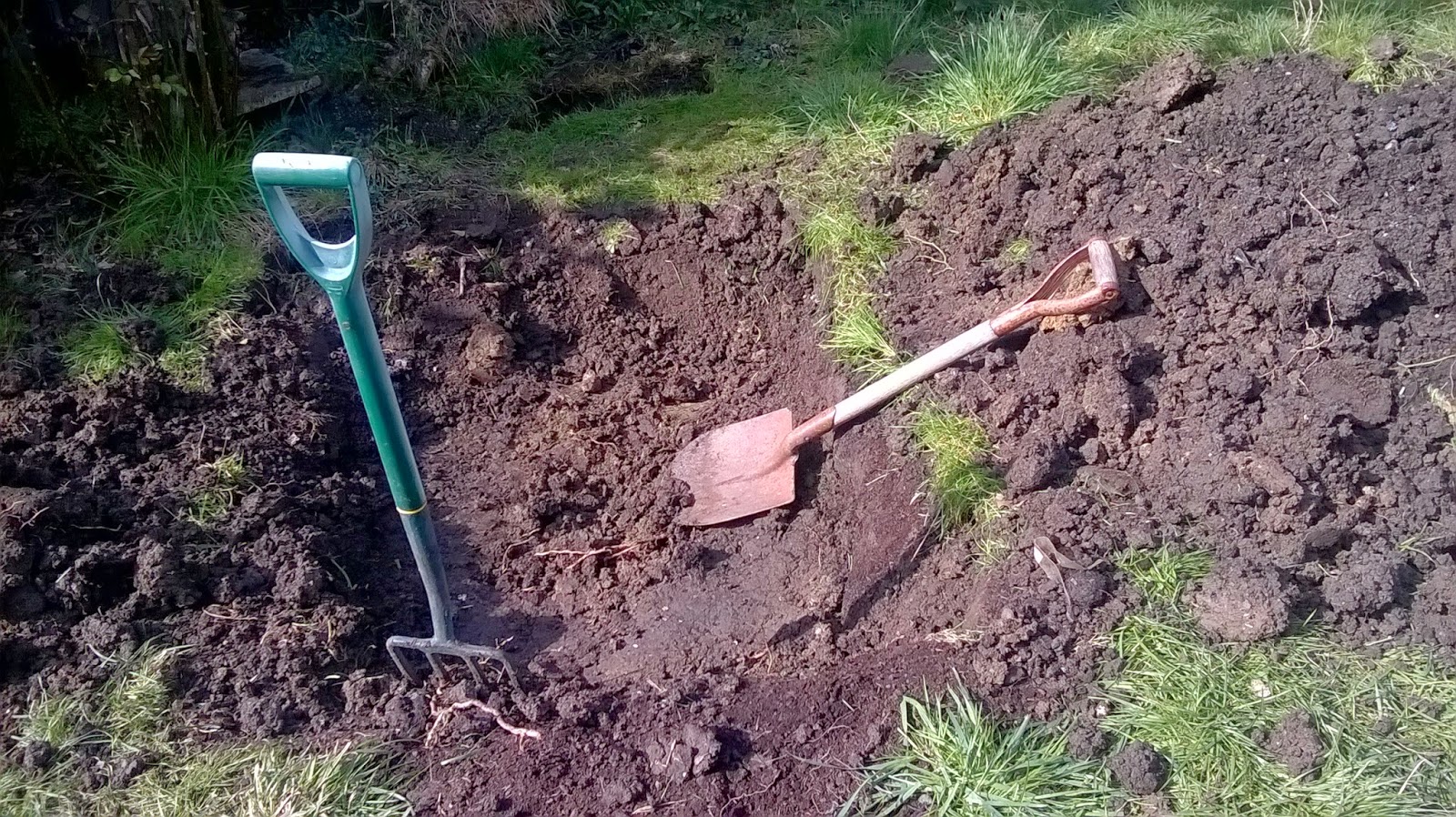 |
| Digging! |
The next day I rose early to get started on the pond. I began by marking out the area and shape using string and proceeded to dig it out for a good 3 hours. The pond ended up a lot deeper than I planned, I must have got a bit carried away! I created different levels of depth and the front area had a sloped shelf that would hopefully allow for easy access as well as escape for any other wildlife that may fall in.
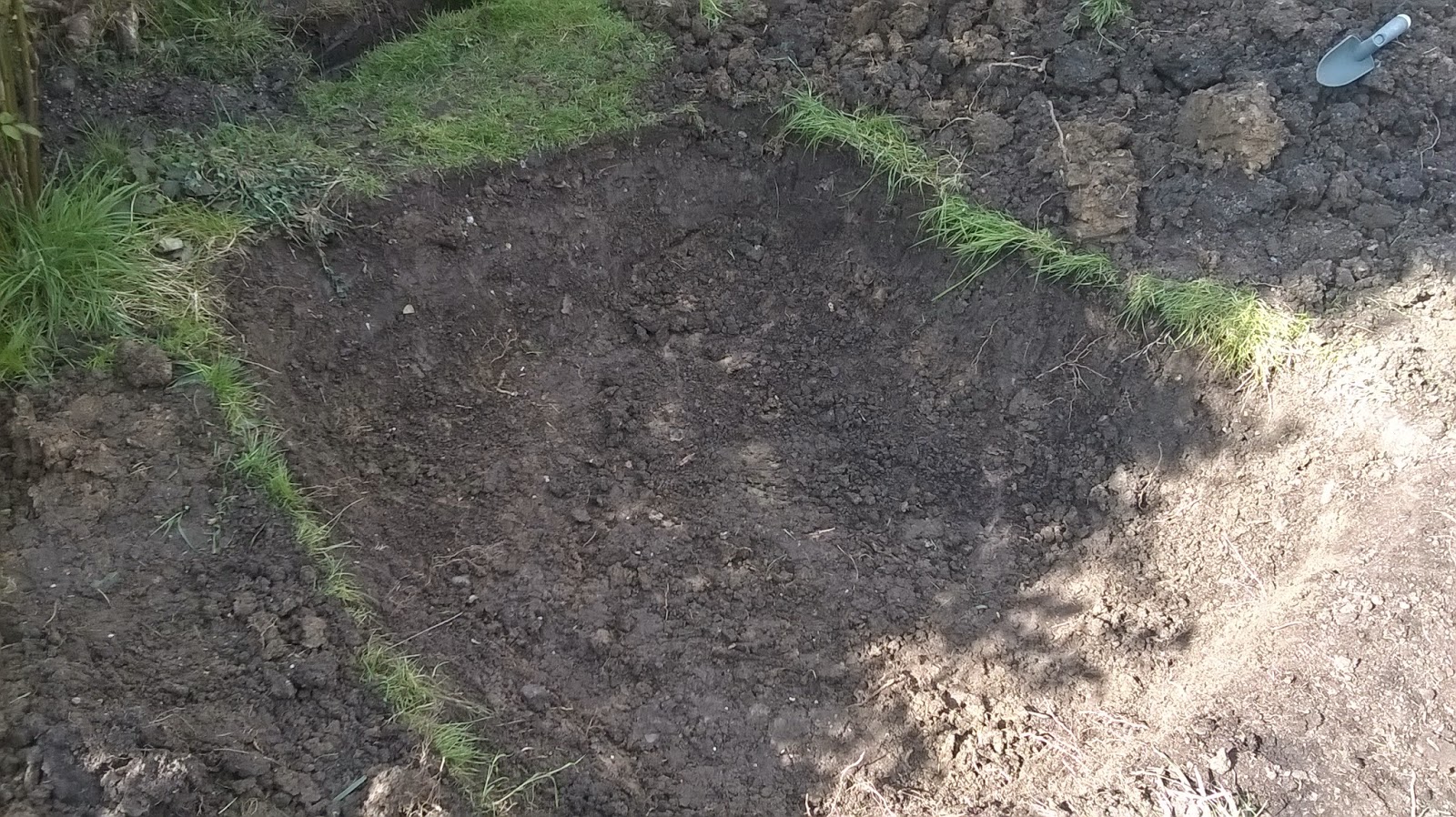 |
| The completed hole. |
Considering this was the first project of this sort I have ever attempted, the dimensions were not perfect and it wasn't entirely flat at the bottom due to limited tool availability. However, a trip to B&Q got me some nice cheap bags of sand as well as a pond liner, which was *JUST* big enough! Phew. The sand worked well to smooth out the hole and prepare it for the pond liner to avoid it getting punctured, and using a bag of large pebbles I also bought from the store, I placed the liner and secured it with the pebbles placed around the edges.
At this point, it was starting to get dark, and there was only time to half-fill the pond and begin to put in the shingle base, so the rest had to wait until the next morning once it was light again.
I went out early in the morning to check on the frogs, and all 8 had moved from the temporary container to the half-filled unfinished pond.. along with 12 extra frogs that had arrived over night!!!
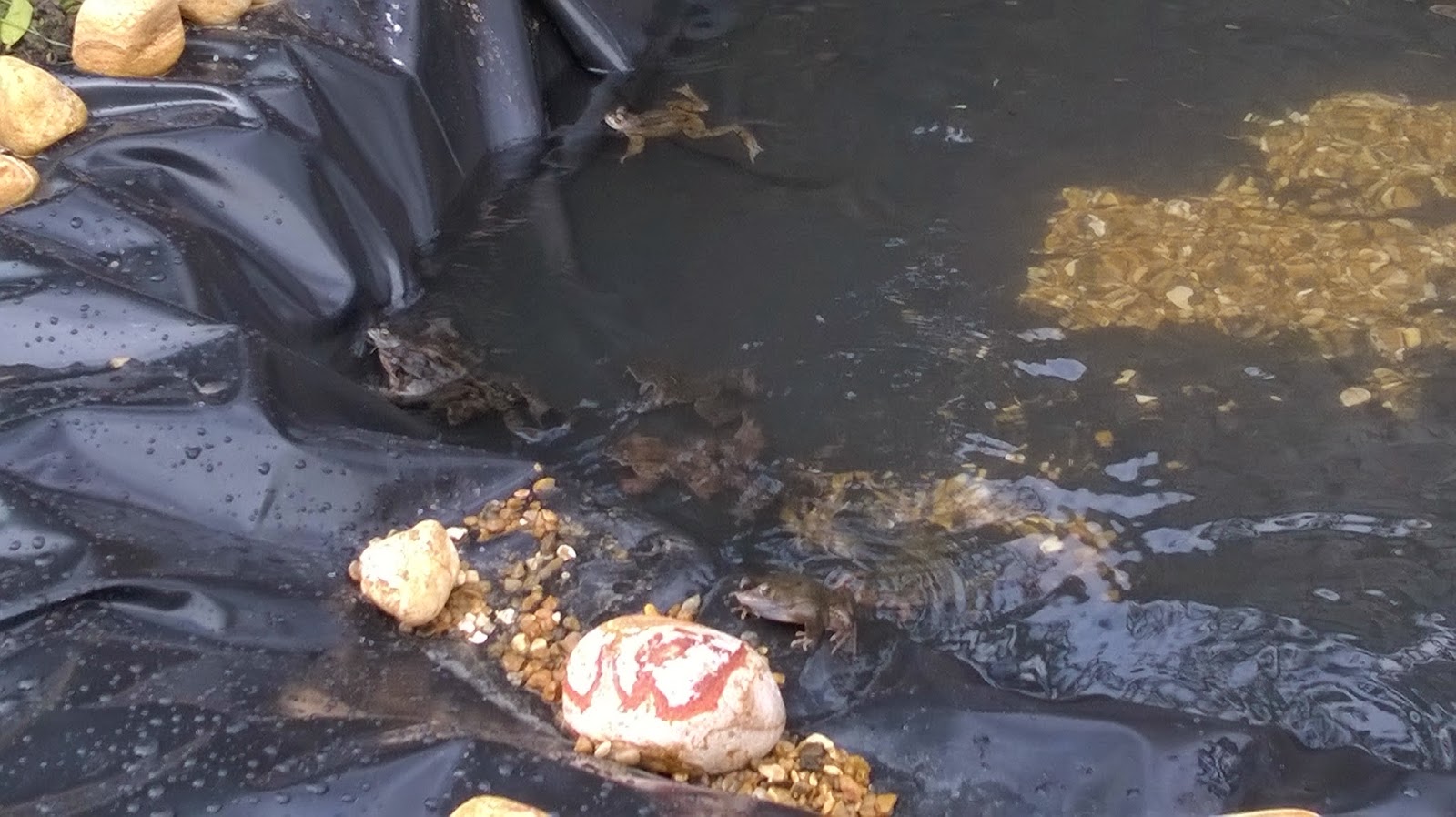 |
| The shelf design was definitely going to be a hit. |
I can only assume they were pleased with what I had so far created considering they all got in immediately despite it only being half done! I proceeded to continue filling up the pond before heading out to buy some aquatic plants from a specialist shop nearby I had looked up. I was mainly interested in oxygenators to keep the water healthy as well as providing food and shelter for the frogs and, hopefully, tadpoles. I ended up with a nice variety of oxygenating plants, native to the UK.
My submerged plants included Hornwort (Ceratophyllum demersum) and
Curled Pondweed (Potamogeton cristpus). A Slender Club Rush (Isolepis
cernua), which is a small oxygenating grass, was planted on the main
shelf. The submerged plants were planted in pots and stones were used on
top to keep them in place and sink them to the bottom of the pond.
 |
| Hornwort |
The
next step of the project will be to make the edges of the pond tidier and
more natural, with an overall aim of planting some other varieties of flora
around the sides for aesthetics as well as protection. But for now, the
pond is completed and the frogs have somewhere decent to stop by, and
hopefully this will mean a reduction in fatalities in the garden!


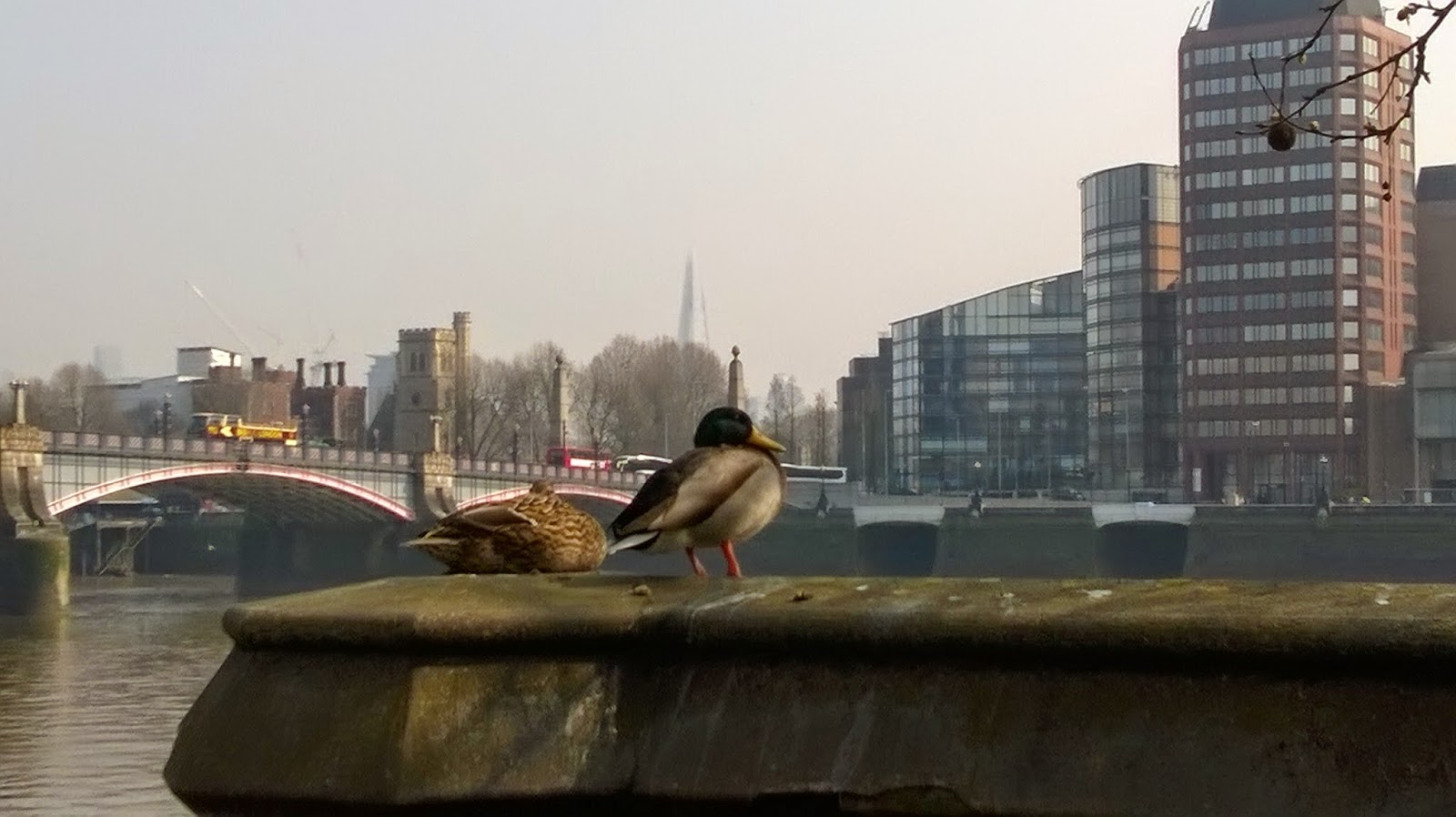 We
have however, found many snails, amphipods and worms! Often when we
turn up there are some interesting visitors, such as these ducks which are usually
seen swimming nearby or napping on the river bank before we come down and disturb them.
We
have however, found many snails, amphipods and worms! Often when we
turn up there are some interesting visitors, such as these ducks which are usually
seen swimming nearby or napping on the river bank before we come down and disturb them.